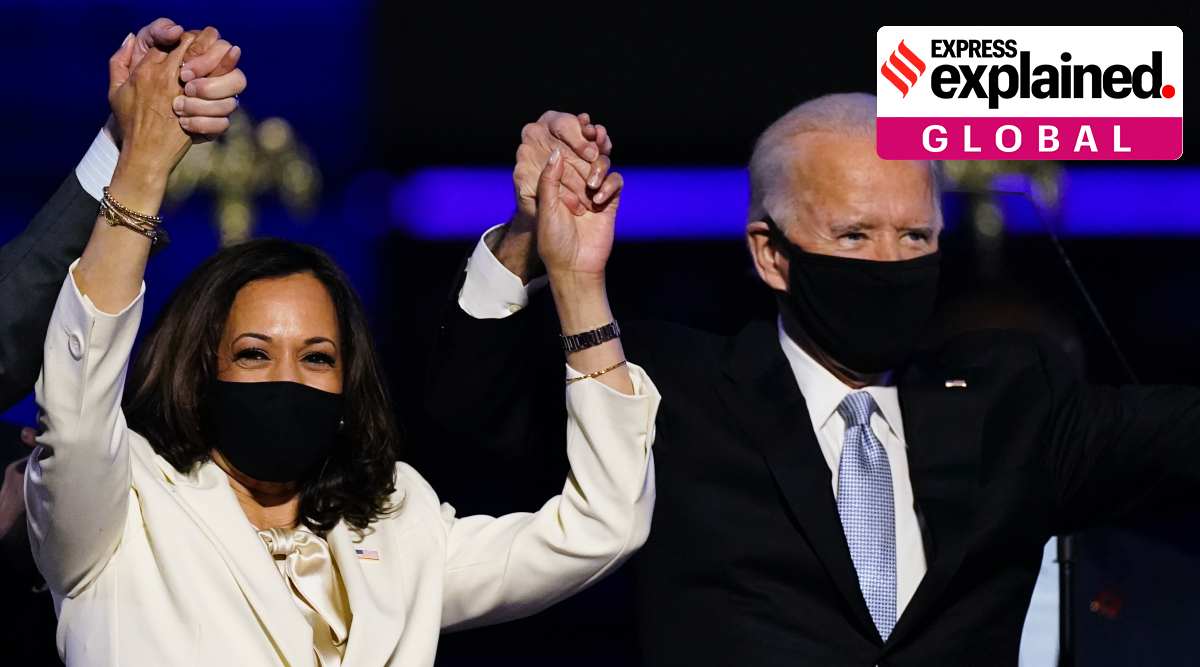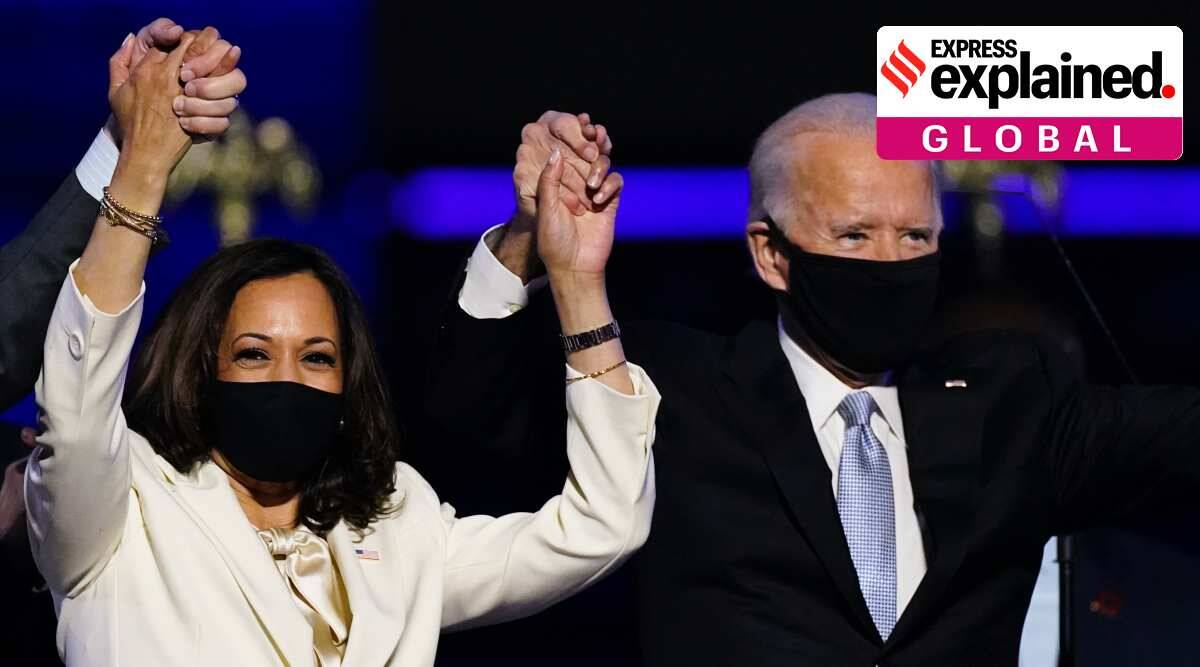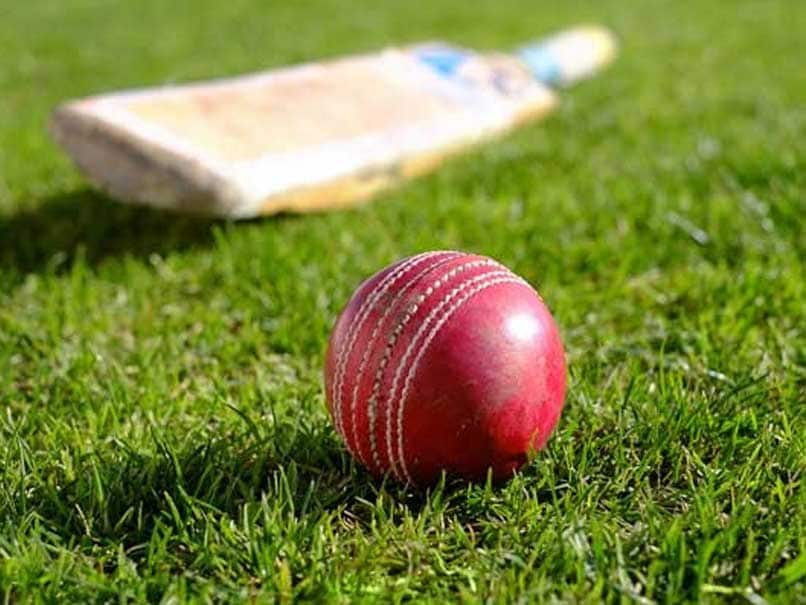[ad_1]
, Edited by Explained Desk | San Francisco |
November 14, 2020 3:15:28 pm
 In this Nov. 7, 2020, file photograph Vice President-elect Kamala Harris holds arms with President-elect Joe Biden as they have a good time in Wilmington, Del. (AP Photo/Andrew Harnik, File)
In this Nov. 7, 2020, file photograph Vice President-elect Kamala Harris holds arms with President-elect Joe Biden as they have a good time in Wilmington, Del. (AP Photo/Andrew Harnik, File)
Almost the day after the US election, pollsters and election forecasters readily admitted that their fashions and surveys appeared to have gotten it wrong as soon as once more.
Even although votes are nonetheless being counted and the information remains to be being sifted, American analysts have begun reflecting on the complete election forecasting business, which predicted a a lot bigger win for President-elect Joe Biden than what we noticed final week.
How do American statisticians create their election prediction fashions?
Models mix two kinds of numbers. The first are the “fundamentals” — the components that form voter decisions. For instance, how the economic system’s standing impacts incumbency possibilities or the truth that a celebration profitable 3 times in a row has solely occurred as soon as in the final 70 years.
Andrew Gelman and Merlin Heidemanns of Columbia University, who created a ballot aggregation mannequin for the Economist, wrote: “Like most forecasts, our model … applies past patterns of voters’ behaviour to new circumstances … ‘How often have previous candidates in similar positions gone on to win?’ If those historical relationships break down, our forecast will misfire.”
Then, researchers take a look at the polls (solutions from consultant samples). The mannequin averages the polls, weights every one in accordance with their pattern sizes, and then, corrects for any biases. Nate Silver, a figurehead in the election forecasting neighborhood and the editor of established knowledge outlet FiveThirtyEight, particularly distinguishes himself from a pollster, stating that his organisation’s job is to grasp how wrong the polls could possibly be to create probabilistic forecasts.
The closing mannequin blends the basics with the ballot averages. With these two kinds of data in place, the researchers run simulations numerous occasions to search out what number of occasions a candidate receives over 270 electoral votes. In 1,000 simulations, if Biden wins 500 occasions, he has a 50 per cent likelihood of profitable. As Election Day nears, researchers give the polls better weight over the basics.
What occurred in 2016?
The mathematic oracles of American elections had confidently prophecied a Hillary Clinton victory. Respected mainstream surveyists gave Clinton a lead as much as 4 factors. She ended up main by a 2.1 share level in the favored vote. FiveThirtyEight confronted the warmth for forecasting that Hillary Clinton had a 70% likelihood of profitable the White House. Silver mentioned folks have been taking election ballot outcomes out of context.
The Economist wrote: “Mr Trump’s unlikely triumph in 2016 left many quantitative election forecasters looking silly. Sam Wang, a professor at Princeton, vowed to eat a bug if Mr Trump, whom he said had just a 1% chance of victory in November 2016, came even close to winning. (He chose a cricket.)” 📣 Click to comply with Express Explained on Telegram
Post-mortems from establishments such because the Association of Public Opinion Research got here to conclude that the polls had underestimated weights for voters with out school levels. The New York Times’ Upshot discovered that the shortage of weights by training standing miscalculated Trump help by 4 factors, matching the error. In some ways, it was a easy underestimation of what number of voters have been white and didn’t have a university diploma. In one other error, late-deciders ended up voting for Trump greater than predicted, and total Trump voter turnout exceeded expectations.
Claiming they’d mounted the errors, the statisticians acknowledged they’d realized their classes from 2016.
What occurred in 2020?
“There’s no question the polls missed (again). But we won’t know by how much until all votes are counted (including estimates of rejected ballots). Then we will reassess. But I think it’s fair to say now that in so many ways, including political polling, Trump is sui generis,” tweeted Director of Monmouth Poll Patrick Murray the day after elections.
Surveys confirmed Biden main by as a minimum eight share factors in the ultimate stretch of the marketing campaign season. He will most likely find yourself with a 4 to 5 share level win. Even each campaigns’ personal non-public polls underestimated Republican candidates.
At the state stage, the predictions have been much more off. RealClearPolitics and FiveThirtyEight overpredicted for Biden in each swing state apart from Arizona. Florida in specific was approach off the mark; with virtually 4 factors, Trump took the state that polls on common had predicted for Biden by three factors. The New York Times and the Washington Post had Biden at a 17 and 11 level lead in Wisconsin. So far, it’s at a one share level distinction. Congressional races have been even worse, with Democrats blindsided by their losses.
“Polls (esp. at district-level) have rarely led us more astray & it’s going to take a long time to unpack,” tweeted Cook Political Report editor Dave Wasserman the day after the elections.
What went wrong?
It’s too early to inform, however the theories have begun to percolate. One idea by Zeynep Tufekci is that there’s not sufficient previous knowledge to precisely create fundamentals as a result of components in elections change so substantively each time.
Other potential solutions may lie in the ultimate turnout knowledge. Nate Cohn of the New York Times says both 2020 offered a brand new set of issues, or the issues of 2016 may have by no means been mounted. He leans in direction of the previous, principally as a result of training weighting didn’t change the predictions. Polls discovered that white voters and not using a school diploma have been to vote for Biden at increased charges than Clinton, however the closing outcomes confirmed that they didn’t shift as predicted. Another error was in the calculations of senior voters, who have been predicted to vote for Biden by 23 factors greater than Trump. But in actuality, seniors didn’t vote for Biden at any increased charges.
Cohn makes the purpose that these should not failures in estimating the scale of teams, however extra so their attitudes. This is expounded to right-wing claims of a “silent majority” that votes for Trump however hides their political opinions. After 2016’s failures, polls misplaced their credibility and maybe fewer Trump supporters have been prepared to answer survey questions.
One apparent potential wrench in the numbers was the pandemic. Polls from earlier than the pandemic hit (between October 2019 and March 2020) have been extra correct than because the election neared. One idea means that Democrats have been extra more likely to be locked down throughout this time and have been extra probably to answer polls than Republicans. Responses did enhance in that point, and scorching spots started displaying extra help for Biden. In different phrases, this was not elevated help for Biden; this was a rise in the chance of a Biden supporter to reply.
Is this about substantive issues or presentation?
Some political pundits say the issue is the presentation of the numbers to a mass viewers, fairly than an issue of the numbers. For instance, if Biden is given a 65 per cent of profitable the election, meaning he has virtually a one-in-three likelihood of shedding. However, most voters who hear a 65 per cent likelihood think about a big chance.
Contenders argue that political oracles have created such massive margins of errors and caveats that they will say they have been proper irrespective of the outcome, rendering them successfully ineffective. Silver has closely rebuked the narrative that the polls have been wrong, writing that his organisation had rightly predicted that Biden may survive a traditional and even barely bigger polling error and nonetheless win. “Voters and the media need to recalibrate their expectations around polls — not necessarily because anything’s changed, but because those expectations demanded an unrealistic level of precision — while simultaneously resisting the urge to ‘throw all the polls out.’ … If you want certainty about election outcomes, polls aren’t going to give you that — at least, not most of the time.”
How are establishments and folks responding?
While the analysts desire to current their arguments in contestation to one another, the overall reflection throughout the board appears to be comparatively cohesive: reduce the obsession with polls.
“Much of American democracy depends on being able to understand what our fellow citizens think. That has become a more challenging task as Americans sort themselves into ideological bubbles … Public-opinion polling was one of the last ways we had to understand what other Americans actually believe. If polling doesn’t work, then we are flying blind,” wrote David Graham of the Atlantic.
Some have problematised the complete numbers sport itself, not simply 2016 weights versus 2020 weights. Silver rose to fame in predicting baseball video games, “but unlike in baseball … this game doesn’t always have a predictable set of rules that all players abide by. There’s much more noise in the signal that can interfere with an algorithm,” mentioned Slate politics editor Joshua Keating.
“We should take the money we spend on pollsters and we should put to organising on the ground. My understanding is that Trump had people on the ground for a year in Florida. I would like to see us relying less on polling because it’s increasingly becoming less perfect in getting us what we want,” Congresswoman Pramila Jayapal mentioned in a webinar the day after elections.
News organisations are equally investing extra in web development evaluation and native information protection to make up for the polling errors.
Tufekci mentioned: “Instead of refreshing the page to update predictions, people should have done the only thing that actually affects the outcome: vote, donate and organize. As we have found out, everything else is within the margin of error.”
[ad_2]
Source hyperlink












